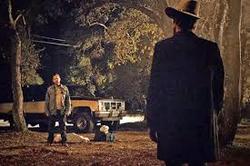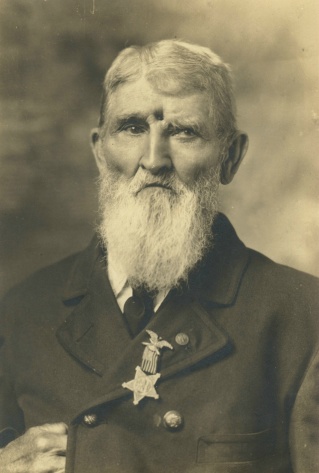 Raylan prepares to test the 21 Foot Rule with Danny Crowe (nerdcoremovement.com)
Raylan prepares to test the 21 Foot Rule with Danny Crowe (nerdcoremovement.com) What, you ask, is a “21 Foot rule”? This “rule” was developed first by Dennis Tueller to explain the phenomenon of police officers being killed by knifemen without their even being able to present a weapon in defense. What they discovered was that an average man can cross 21 feet (7 yards) in 1.5 seconds … this is problematic since the average man’s reaction time is also 1.5 seconds, which means that a determined attacker can be on top of his victim, even an armed victim, before they realize they’re even being attacked, even from as far as 21 feet away. Hence the rule’s name. Generally, distance favors the shooter, but inside 21 feet, the presumed advantage of a gun virtually disappears.
The 21 Foot Rule has been a buzz for some time in defensive shooting circles, and even made an appearance on the hit television show Justified, in which Danny Crowe (A.J. Buckley) dispatches one of his fellow bad guys, and finally challenges the lead character Raylan Givens, using the rule. The outcome is predictable, and yet the way it ends defies expectation. But, as with any fictional interpretation of real combat principles, the 21 foot rule a’la Justified was fraught with problems. The “rule” assumes an unwary target, first and foremost – once Raylan knows that Crowe is going to attack with a blade (regardless of the distance), the jig is up and the specifications of the 21 foot window are moot. Especially if the target is an accomplished pistoleer, as Raylon is in Justified. The “rule” of 21 feet is all about reaction time, not distance, and if one expects a given action, one’s reaction time to it will be significantly shorter.
This brings up another wrinkle in the 21 Foot Continuum, that being that everyone’s 21 feet is different. 21 feet is an average, and all things being equal, nothing ever is. The “rule,” (it’s really a guideline, at best), states that the average man can cross 21 feet in the same time as another average man’s reaction time. Sadly, reaction times vary considerably and decline with age; my reaction time pushing 50 is not what it was twenty years ago, and so my 21 feet is really more like 27.
I know this from doing a drill on the range. Facing the target, a buddy stood beside me facing away from me. At the bell, I drew and fired as he ran like hell toward the back of the range. At the sound of my shot, he stopped, and we measured how far away from me he was able to run (remember, he was running away from the direction I was shooting) before I was able to present my weapon and fire. In multiple attempts, and knowing that I was being tested on the 21 Foot Rule, I never made 21 feet.

 RSS Feed
RSS Feed
